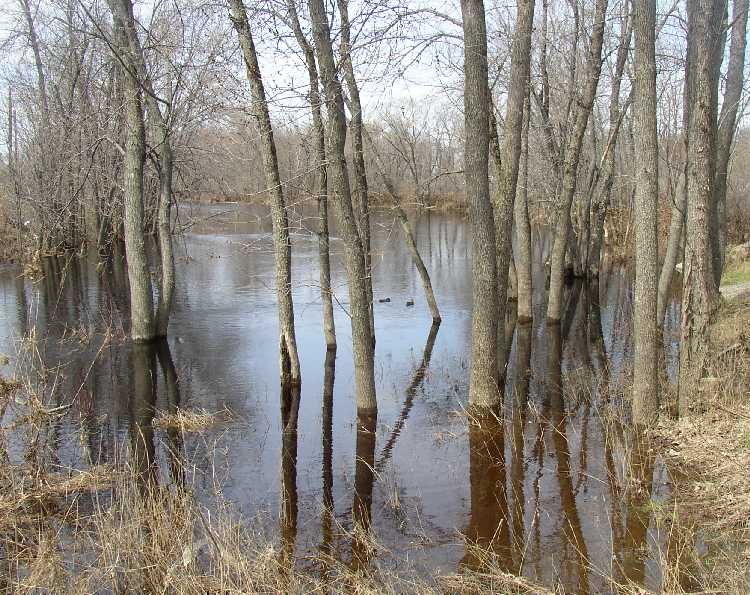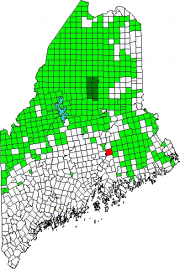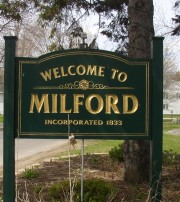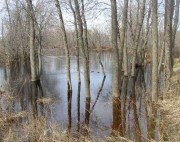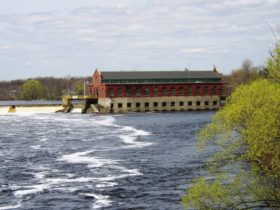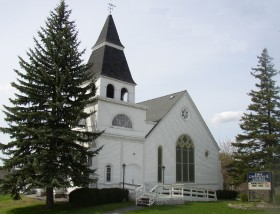| Year | Population |
|---|---|
| 1970 | 1,828 |
| 1980 | 2,160 |
| 1990 | 2,884 |
| 2000 | 2,950 |
| 2010 | 3,070 |
| Geographic Data | |
|---|---|
| N. Latitude | 44:59:41 |
| W. Longitude | 68:34:19 |
| Maine House | District 121 |
| Maine Senate | District 5 |
| Congress | District 2 |
| Area sq. mi. | (total) 45.8 |
| Area sq. mi. | (land) 45.6 |
| Population/sq.mi. | (land) 67.3 |
County: Penobscot
Total=land+water; Land=land only |
|
[MIL-frd] is a town in Penobscot County, incorporated on February 28, 1833 from Sunkhaze Plantation. Originally it was known as OIP 3, EPR, or Old Indian Purchase Number 3, East of the Penobscot River.
The first settler arrived in 1800. The following year Massachusetts sent a survey party to establish lots. One of the group, Joseph Butterfield, returned with his family in December 1802 to become the first permanent resident.
The first saw mill was built in 1826, followed by a second in 1833. The ensuing prosperity lead to the towns incorporation, named for Milford, Massachusetts from which some early settlers had come.
The Bodwell Water Power Company Plant is a historic structure and landmark on the banks of the Penobscot River.
The Sunkhaze Meadows National Wildlife Refuge combines bog, marsh, floodplain forest and the state’s second largest peatland. With eleven different ecosystems, it is frequented by more than 140 bird species and is managed by the U.S. Fish & Wildlife Service.
The town, across the river from Old Town, is a moderately growing residential area serving the northern reaches of the greater Bangor area and the University of Maine in Orono.
Form of Government: Town Meeting-Select Board-Manager.
Additional resources
Baker, David Seth. An Investigation of the Development of the Bodwell Water Power Company at Milford, Maine. Thesis (B.S.) in Civil Engineering–University of Maine. 1915.
Chadbourne, Ava Harriet. Maine Place Names and The Peopling of its Towns.
History of Milford: About its Origin, Growth and its People from 1800. Milford, Me.? Milford Bicentennial Committee? 1976.
*Maine. Historic Preservation Commission. Augusta, Me. Text and photos from National Register of Historic Places: http://pdfhost.focus.nps.gov/docs/nrhp/text/xxxxxxxx.PDF and http://pdfhost.focus.nps.gov/docs/nrhp/photos/xxxxxxxx.PDF
Bodwell Water Power Company Plant: 88001842.PDF
Milford Congregational Church: 89000841.PDF
Sorg, Marcella Harnish. A Brief History of the Franco-Americans in the Old Town Area. Bedford, N.H. National Materials Development Center. 1978. [University of Maine at Fort Kent. Blake Library]
United States. Army. Corps of Engineers. Floods on Penobscot and Stillwater Rivers: Old Town & Milford, Maine. Waltham, Mass. U.S. Department of Defense, Department of the Army, Corps of Engineers, New England Division. 1976. [University of Maine, Raymond H. Fogler Library, Government Documents]
National Register of Historic Places – Listings
Bodwell Water Power Company Plant
[east side of Penobscot River at Bridge Street] The Bodwell Water Power Company Plant is an original and effective architectural structure. It was also a pioneer in transmitting electric power to mills without the need for their needing to have a water power source. The plant was the last in a sequence of mills in Old Town and Milford and the first of a new kind of mill, which made commercial and industrial history. This mill was intended only to provide power to run factories, some as far away as South Brewer. It was not a “manufactory” of goods but the source of power to factories elsewhere and the herald of the modern power industry. The ambitious vision of the Bodwell Company’s officers is reflected in the building’s carefully orchestrated and elaborate details.
Company officials behind this project had deep roots in the industrial and social history of the Bangor-Old Town region. All apparently had been inspired by Maine Governor Joseph R. Bodwell (1818-1887). He had directed the acquisition of the Milford site by the Bodwell Water Power Company in the early 1880s, but died before the company’s sawmill and lumbering operations were supplanted by the new kind of industry. This was the era in which public and utilities buildings were built as the equivalent of palaces. Its location in this relatively remote spot in the Penobscot River basin makes it surprising. It is even possible that the sophisticated architectural focus of the project interfered with the planning of its hydro components because studies beginning in 1913 show that the plant and dam arrangement were relatively inefficient as built. The grand architectural goal apparently had precedence over the technical and business interests.*
Milford Congregational Church
[Main and Perry Streets] Built between 1883 and 1885 by Old Town contractor Asa T. Wing, the Milford Congregational Church is one of the most architecturally significant buildings in town. The detailing and stained glass windows remain virtually intact. As early as 1880, Milford residents enlisted Old Town minister H. A. Freeman to deliver sermons in the new school. On June 28, 1883 the first organizational meeting of the embryonic parish resolved to accept the lot deeded by the Bodwell Power Company and to build a church. Over the next two years the church was built. The Milford Congregational Church was formed on April 15, 1885, after the Ecclesiastical Council of Congregational Churches met and approved the membership list submitted by Reverand H. A. Freeman.
Tradition maintains that the first building was “a long, narrow building with a cellar, built on the south side of the lot deeded by the Bodwell Power Company.” Evidence of an earlier building in the belfry indicates that the current vestry was probably the first church, to which the nave and tower were added.*


